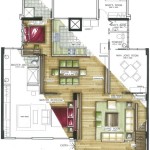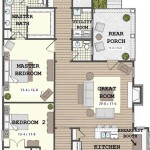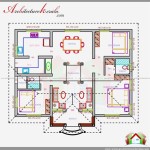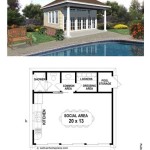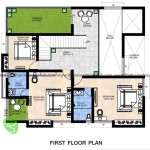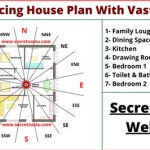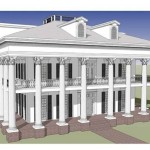Bungalow Floor Plan Ideas: Maximizing Space and Character
Bungalow floor plans offer a unique blend of charm and practicality, often associated with single-story living and a focus on efficient use of space. They originated in India and gained popularity in the early 20th century, particularly in the United States and the United Kingdom. Bungalows are known for their low-pitched roofs, wide front porches, and connection to the surrounding landscape. Designing an effective bungalow floor plan requires careful consideration of factors such as room layout, natural light, and accessibility. This article explores diverse bungalow floor plan ideas, outlining key aspects to consider when designing or renovating this type of home.
When approaching a bungalow floor plan, recognizing its defining characteristics is crucial. Bungalows traditionally prioritize horizontal space, with minimal or no second story. This layout lends itself well to aging in place and accessibility considerations. The architectural style often features open-concept living areas, maximizing the flow of space. Furthermore, bungalows frequently incorporate built-in storage solutions, reflecting a desire for practicality and organization. Understanding these core elements forms the foundation for developing a successful and functional floor plan.
Optimizing Space in a Small Bungalow
One of the primary challenges in designing a bungalow floor plan is maximizing space, especially in smaller footprints. Due to the limited square footage, every room must serve a purpose and contribute to the overall functionality of the home. Several strategies can be implemented to effectively optimize space in a small bungalow. These strategies include utilizing open-concept living areas, incorporating multi-functional furniture, and maximizing vertical space through clever storage solutions.
Open-concept living areas, which combine the living room, dining room, and kitchen into a single, flowing space, create an illusion of spaciousness. By eliminating walls between these areas, natural light can penetrate deeper into the home, further enhancing the sense of openness. Strategic furniture placement defines distinct zones within the open space. For example, an area rug can delineate the living room section, while a kitchen island can serve as a transition between the kitchen and dining area. This approach allows for flexible living arrangements and promotes social interaction.
Multi-functional furniture is a vital component of space-saving strategies. Items such as sofa beds, storage ottomans, and folding tables can serve multiple purposes, reducing the need for separate pieces of furniture. Consider a coffee table with built-in drawers for storing books or blankets, or a dining table that can be extended when needed. These types of furniture solutions offer versatility and adaptability, crucial for maximizing space in a compact bungalow.
Maximizing vertical space is another effective technique for optimizing a small bungalow. Shelving units that extend to the ceiling can provide ample storage without taking up valuable floor space. Install cabinets above appliances in the kitchen to utilize otherwise unused areas. In bedrooms, consider using platform beds with built-in drawers underneath to store clothing or bedding. These vertical storage solutions can significantly increase storage capacity without compromising the floor plan.
Adapting Bungalow Floor Plans for Modern Living
While bungalows retain their classic charm, adapting the floor plan for modern living is essential to meet contemporary needs and preferences. This often involves incorporating modern amenities, improving energy efficiency, and enhancing the overall flow and functionality of the home. Updating the kitchen and bathrooms, adding smart home technology, and integrating sustainable design principles are key considerations when adapting a bungalow for modern living.
Updating the kitchen and bathrooms is a crucial aspect of modernizing a bungalow floor plan. These spaces are often the focal points of the home and can significantly impact its functionality and value. In the kitchen, consider replacing outdated appliances with energy-efficient models and installing modern cabinetry and countertops. Optimizing the layout to improve workflow and accessibility is also important. For example, incorporating a kitchen island with seating can create a central gathering place and enhance the functionality of the space.
In the bathrooms, focus on creating a spa-like atmosphere with modern fixtures, updated tiling, and ample storage. Consider adding features such as walk-in showers, soaking tubs, and double vanities to enhance comfort and convenience. Proper ventilation is also essential to prevent moisture buildup and maintain air quality. These updates can transform the bathrooms into luxurious and functional spaces within the bungalow.
Integrating smart home technology can further enhance the modern living experience. Installing smart thermostats, lighting systems, and security systems can improve energy efficiency, convenience, and security. Consider incorporating features such as voice-activated controls, remote access, and automated lighting schedules to create a smart and responsive home environment. These technologies can add a layer of sophistication and functionality to the bungalow.
Implementing sustainable design principles is an important aspect of modernizing a bungalow. This can involve using eco-friendly building materials, improving insulation, and installing energy-efficient windows and doors. Consider adding solar panels to generate renewable energy and reduce reliance on fossil fuels. These sustainable design features can improve the environmental performance of the bungalow and reduce its carbon footprint.
Integrating Outdoor Spaces into Bungalow Design
One of the defining characteristics of a bungalow is its connection to the outdoors. Integrating outdoor spaces into the floor plan can enhance the living experience and create a seamless transition between the interior and exterior of the home. Designing functional porches, incorporating patios or decks, and creating outdoor living areas are effective strategies for integrating outdoor spaces into a bungalow design.
Designing functional porches is a hallmark of bungalow architecture. The front porch serves as a welcoming entrance and an outdoor living space. Consider designing a porch that is appropriately sized for the bungalow and that provides adequate protection from the elements. Incorporating comfortable seating, such as rocking chairs or porch swings, can create a relaxing space for socializing or enjoying the outdoors. Adding details such as decorative railings and landscaping can enhance the curb appeal of the bungalow and create a welcoming atmosphere.
Incorporating patios or decks provides additional outdoor living space and extends the functionality of the home. A patio or deck can serve as an outdoor dining area, a lounge space, or a place for outdoor entertaining. Consider the location and orientation of the patio or deck to maximize sunlight and privacy. Using durable and weather-resistant materials, such as composite decking or natural stone, is important for ensuring the longevity of the outdoor space. Adding features such as outdoor lighting, fire pits, and built-in seating can enhance the ambiance and functionality of the patio or deck.
Creating outdoor living areas that seamlessly connect to the interior of the bungalow can further enhance the integration of outdoor and indoor spaces. This can be achieved through features such as French doors, sliding glass doors, and large windows that offer unobstructed views of the outdoors. Consider designing an outdoor kitchen or bar area to facilitate outdoor entertaining. Adding features such as pergolas, trellises, and landscaping can create a natural and inviting outdoor living space. These elements can blur the lines between the interior and exterior, creating a cohesive and harmonious living environment.
In conclusion, bungalow floor plans offer a unique opportunity to create a charming and functional home that maximizes space and character. By carefully considering factors such as room layout, natural light, and accessibility, it is possible to design a bungalow floor plan that meets the needs and preferences of modern living. Optimizing space in a small bungalow, adapting the floor plan for modern living, and integrating outdoor spaces into the design are key considerations when designing or renovating this type of home.

Top 40 Unique Floor Plan Ideas For Diffe Areas Engineering Discoveries Bungalow Plans Luxury House Courtyard

Small Bungalow House Plans

Bungalow House Plans We Love Blog Homeplans Com

Small Bungalow House Plans

Small House Design 2024005 Pinoy Eplans Modern Blueprints Plans

Your Guide To Bungalows What Is A Bungalow House And More Houseplans Blog Com

Small Bungalow House Plans

Bungalow House Plans We Love Blog Homeplans Com

Bungalow Floor Plans Style Homes Arts And Crafts Bungalows

Small Beautiful Bungalow House Design Ideas Five Bedroom 4ad Four Plans 5


